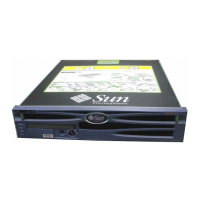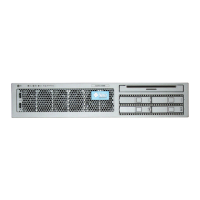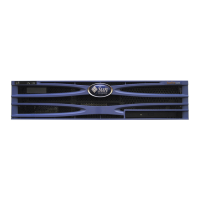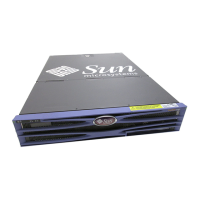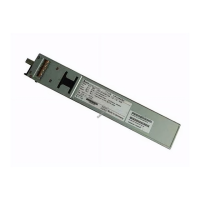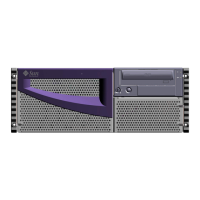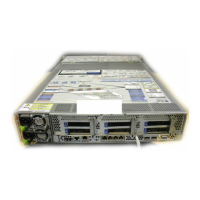Chapter 5 Cabling the Server 69
■ The SC network management port (labeled NET MGT) is the optional
connection to the ALOM system controller. This port is not available until you
have configured network settings for the system controller (through the SC
serial management port). See “Enabling the System Controller Network
Management Port” on page 80. The SC network management port uses an
RJ-45 cable for a 10/100BASE-T connection. This port does not support
connections to Gigabit networks.
■ Ethernet ports: Labeled NET0, NET1, NET2, and NET3. The Ethernet interfaces
operate at 10 Mbyte/sec, 100 Mbyte/sec, and 1000 Mbyte/sec.
■ TTYA serial port: Use the DB-9 connector with a null modem cable for serial
devices. This port appears as ttya in Solaris OS and OpenBoot messages. This
port is not connected to the SC serial management port.
■ USB Ports: USB ports support hot-plugging. You can connect and disconnect USB
cables and peripheral devices while the server is running, without affecting
system operations.
■ You can only perform USB hot-plug operations while the OS is running. USB
hot-plug operations are not supported when the OpenBoot PROM ok prompt
is displayed or before the system has completed booting.
■ You can connect up to 126 devices to each of the two USB controllers, for a
total of 252 USB devices per server.
■ Input power cables: Do not attach power cables to the power supplies until you
have finished connecting the data cables, and have connected the server to a serial
terminal or a terminal emulator (PC or workstation). The server goes into Standby
mode and the ALOM system controller initializes as soon as the input power
cables are connected to the power source. System messages might be lost if the
server is not connected to a terminal, PC, or workstation at this time.
Connecting Cables
▼ To Connect the Ethernet Network Cables
The server has four RJ-45 Gigabit Ethernet network connectors. They are marked
NET0, NET1, NET2, and NET3 (
FIGURE 5-2).
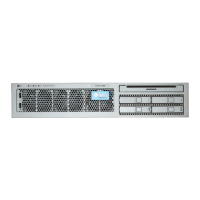
